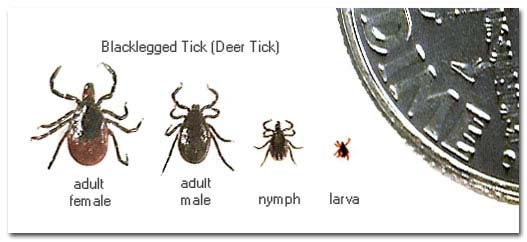Scientists have predicted that this upcoming season is going to show an explosion in tick populations. With the mild winter we have had, and the warm weather becoming stagnant they have stated we will also see an explosion in acorns and mice. Ticks carry a deadly disease called Lyme Disease that not all ticks carry, but the majority do. 300,000 cases of Lyme Disease are reported each year. According to the National Centers for Disease Control and Prevention, New York has the highest number of confirmed Lyme Disease cases nationwide. Ticks are among the family of crabs, so they have pincers that can latch onto clothing, skin or fur without a qualm. The most common type of ticks found on Long Island are the Deer Tick, The Lonestar Tick (brought up from the South) and the American Dog Tick. While Lyme Disease is the front-runner for deadly diseases carried by ticks, it is not all that they have. There are many other deadly pathogens and bacteria for both humans and animals. If you find a tick latched onto skin on you or your pet, remove it immediately, place it in a plastic baggie and bring it to your physician or vet to get checked for diseases. Here is a list of things you can do to protect you, your family and pets from ticks this summer.
- Avoid wooded and brushy areas with high grass and leaf litter.
- Stay on center trails when hiking, while also wearing long socks, sleeves and pants.
- Use bug repellents with at least 20 to 30 percent DEET on any exposed skin and clothing for an extra layer of protection.

Full Size Tick and Nymph
- Examine yourself, your family and pets very carefully after being outside. A baby tick (or Nymph) can latch and is about the size of a poppy seed.
- Ticks like warm parts of the body (e.g. armpits, bellybuttons, behind the ears, knees, groin, or buried under hair.
- Remove any ticks immediately with a pair of tweezers. The pincers and clawlike mouth, allow the pest to bury itself in your skin. Act quickly.
- Wash any clothes that you have worn in tick infested areas immediately, then put in the dryer on the highest setting. It is impossible for the bugs to survive this.
- Check gear and toys you have brought with you thoroughly.
- Use a comb on pets, the ticks can burrow into fur and cause a plethora of infections in dogs regardless of size.
Thank you to Newsday for the original information, you can read more here.


